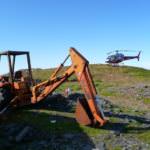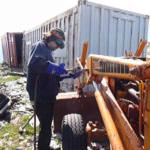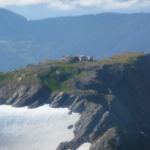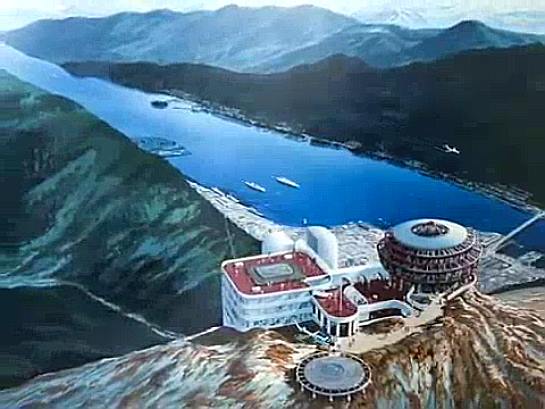
In this edition of Curious Juneau, we answer another question about Mount Juneau.
Listener Joann Flora writes about “that piece of hardware atop Mount Juneau, how did it get there and what is its purpose?”

Curious Juneau stars you and your questions. Every episode we help you find an answer. Catch up on past episodes, or ask your own question on the Curious Juneau page.
Listen to the Curious Juneau segment about the Mount Juneau tramway project:
When we got in touch with her, Flora said she was asking about the big microwave reflector on the side of the mountain which we found out on a previous edition of Curious Juneau.
But that got us thinking about the other stuff, including the unfinished building that was left at the summit you can’t see from downtown Juneau.
We’ve got an answer for that, too.
Many longtime Juneau residents may remember before the Goldbelt Mount Roberts Tramway, there were plans to build the Mount Juneau tramway.
Chuck Keen had the idea for the project. The local character was a U.S. Marine, hard rock miner and timber faller before becoming a freelance cinematographer working for such clients as Disney. He also spent time in Vietnam capturing footage of the war.
“Chuck Keen’s experiences traveling the world led him to a vision of Juneau’s future as a tourist destination,” said a narrator in a short documentary produced by Pat Race in 2006.
“Keen had purchased property on the top of Mount Juneau in 1970 and dreamed of a tram leading to a beautiful alpine setting which would host a hotel, a two-story revolving restaurant, a museum, and a stage for performances, as well as access to the mountain trails and the icefield,” the narrator explained.
The original plan called for a lower tramway station on South Franklin Street, with a mid-point tower on Gastineau Ridge. The upper tramway station with the hotel and restaurant would be at the summit of Mount Juneau.
The project began to stall in the mid-1980’s after one of Keen’s companies filed for bankruptcy protection.
Keen and the City and Borough of Juneau also became embroiled in a big dispute over mining claims and property he had purchased for the project.
Keen claimed the city was trespassing because they were using an old AJ Mine tunnel under his mining claims as a water reservoir. The dispute dragged on and eventually ended up before the Alaska Supreme Court.
Keen also missed the project’s permitting deadlines and conditions. The tram project was eventually canceled in 1991.
The Mount Roberts tram opened six years later.
“I think he always felt that if he could build his tram, the other tram would just dry up and blow away,” said Chuck Keen’s son Mike in the documentary video.
At the very top of Mount Juneau, Keen had a heavy-lift helicopter haul up a backhoe, some shipping containers, and other equipment for the project. He also started construction on a bunkhouse for workers. That was all left on the mountain when the project fell apart.
Then, Keen died in 2003.
George Schaaf remembers that Karen Keen, widow of Chuck Keen, contacted him in 2009 for help in cleaning up her property at the summit.
“She had a desire to get all of that off of the mountain and try to return it back to its natural state as best as we could,” Schaaf said. “We told her that we would help her out with that.”
Back then, Schaaf was head of Trail Mix, the local trail rehabilitation group.
“We were grateful for her permission to get access up on the mountain to get it taken care of,” Schaaf said.
Schaaf remembers they got help from Temsco, AEL&P and Skookum Sales and Recycling. He and three other Trail Mix volunteers and staff members spent a few days up on the summit.
They used an oxyacetylene torch to cut the containers and back hoe into pieces.
“We had to cut it into about three pieces — the boom, the bucket and the frame — to fly it off. Just because of the weight,” Schaaf said. “The helicopters that we have here in Juneau these days are limited in how much they can lift. So, we had to cut the pieces down to a size that the helicopter can actually fly it off the mountain.”
Schaaf recalls that some cable rigging, logs and the unfinished bunkhouse still remain up there. They planned on burning the bunkhouse, but they didn’t have a burn permit. And they figured an unpublicized fire on the summit might alarm Juneau residents.
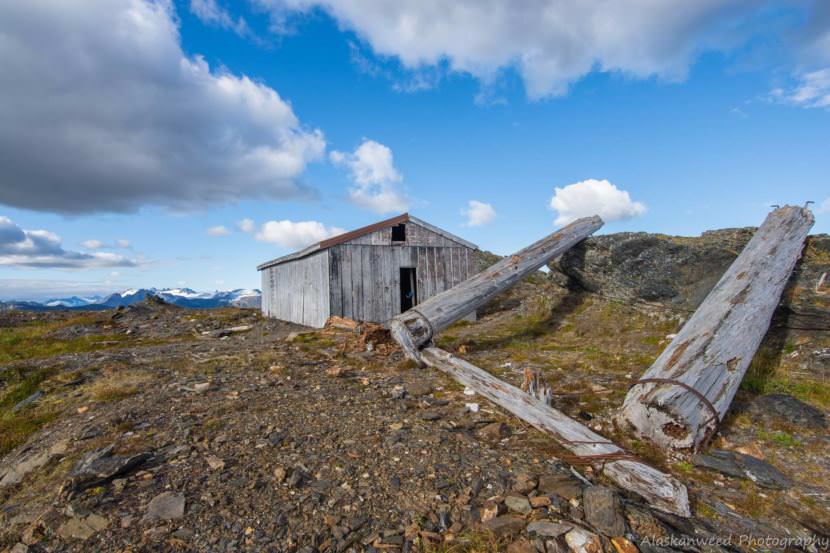
We consulted a variety of sources for this story including an Alaska Supreme Court decision written by Justice Jay Rabinowitz that includes a history of the tramway project, Trail Mix’s Facebook photo page of the Mount Juneau clean up project, and Juneau’s Hidden History Facebook biography of Chuck Keen that incorporates information from multiple sources.
The Alaska Division of Libraries, Archives and Museums has posted YouTube video collections of outtakes and stock footage taken by Chuck Keen, volume 1 and volume 2.
George Schaaf serves on the KTOO Board of Directors.
